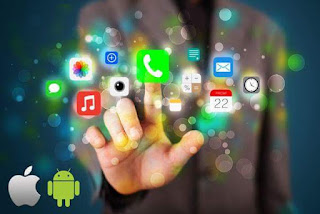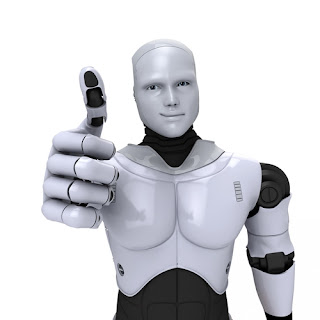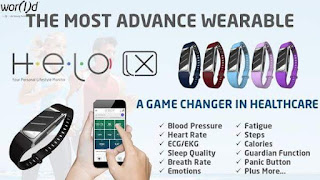From the first time a human realized that a sharpened rock could cut through tough materials, technology has incredibly impacted the way people lead their lives.So many new technologies have appeared in the past half century that it’s impossible to list them all. But these 10 high-tech breakthroughs stand out over the last 50 years because they’ve revolutionized the way Americans live. We look back at their beginnings, as well as where they’ve taken us today. These 10 recent advancements in technology have changed the way people live, play, and communicate.There are so many things around us that we take for granted but make our lifestyle possible. For instance, could you imagine living a day without checking emails on your computer or walking around without your mobile phone? As you read through these 10 inventions that changed our way of life, think about how different things would be without them.
10 – Smartphones & Mobile Apps
A smartphone is a mobile phone (also known as cell phones or cell mobiles) with an advanced mobile operating system that combines features of a personal computer operating system with other features useful for mobile or handheld use. Smartphones, which are pocket-sized, typically combine the features of a mobile phone, such as the abilities to place and receive voice calls and create and receive text messages, with those of other popular digital mobile devices like personal digital assistants (PDAs), such as an event calendar, media player, video games, GPS navigation, digital camera and digital video camera. Smartphones can access the Internet and can run a variety of third-party software components ("apps" from places like Google Play Store or Apple App Store). They typically have a color display with a graphical user interface that covers more than 76% of the front surface. The display is almost always a touchscreen and sometimes additionally a touch-enabled keyboard like the Priv/Passport BlackBerrys, which enables the user to use a virtual keyboard to type words and numbers and press onscreen icons to activate "app" features. Although cellular phones have been around since the 1980s, smartphones didn’t become popular until the 2000s. Experts believe that about 1.75 billion people will own smartphones by the end of 2014 and 4.55 billion will own some sort of mobile phone.Smartphones have become so ubiquitous that some restaurants have banned them. Instead of sharing photos online, the restaurants want people to share food with each other in real life.Smartphones have changed our lives so much lives so much that some people don’t know how to put them down just to enjoy a meal.
09 – Robots and artificial intelligence.
A robot is a machine—especially one programmable by a computer—capable of carrying out a complex series of actions automatically. Robots can be guided by an external control device or the control may be embedded within. Robots may be constructed to take on human form but most robots are machines designed to perform a task with no regard to how they look.Robots can be autonomous or semi-autonomous and range from humanoids such as Honda's Advanced Step in Innovative Mobility (ASIMO) and TOSY's TOSY Ping Pong Playing Robot (TOPIO) to industrial robots, medical operating robots, patent assist robots, dog therapy robots, collectively programmed swarm robots, UAV drones such as General Atomics MQ-1 Predator, and even microscopic nano robots. By mimicking a lifelike appearance or automating movements, a robot may convey a sense of intelligence or thought of its own. but the first real industrial robot was built in 1954 by George Devol. Five years later, the Massachusetts Institute of Technology founded its Artificial Intelligence Laboratory in a quest to mechanically mimic human minds as well as hands. Today, robots assemble products better, faster and often cheaper than manual laborers, while more than 8 million U.S. airline flights a year are scheduled, guided and flown with the superhuman assistance of advanced software. Still, some Americans eye such systems with the cynical view of novelist Kurt Vonnegut, whose 1952 story “Player Piano” warned that the machines might leave people without a purpose — or a job.There are concerns about the increasing use of robots and their role in society. Robots are blamed for rising unemployment as they replace workers in increasing numbers of functions. The use of robots in military combat raises ethical concerns. The possibilities of robot autonomy and potential repercussions have been addressed in fiction and may be a realistic concern in the future.
08 – Online Shopping
Online shopping is a form of electronic commerce which allows consumers to directly buy goods or services from a seller over the Internet using a web browser. Consumers find a product of interest by visiting the website of the retailer directly or by searching among alternative vendors using a shopping search engine, which displays the same product's availability and pricing at different e-retailers. As of 2016, customers can shop online using a range of different computers and devices, including desktop computers, laptops, tablet computers and smartphones.Online stores typically enable shoppers to use "search" features to find specific models, brands or items. Online customers must have access to the Internet and a valid method of payment in order to complete a transaction, such as a credit card, an Interac-enabled debit card, or a service such as PayPal. For physical products (e.g., paperback books or clothes), the e-tailer ships the products to the customer; for digital products, such as digital audio files of songs or software, the e-tailer typically sends the file to the customer over the Internet. The largest of these online retailing corporations are Alibaba, Amazon.com, and eBay It seems like distant history, but it wasn’t that long ago that people had to purchase goods directly from local stores. Today, over 195 million people in the U.S. shop online. This means they can purchase a wide range of goods without ever leaving their houses. E-commerce sales are expected to reach $1.4 trillion by 2015.
07 – Tablet Computers
A tablet computer, commonly shortened to tablet, is a thin, flat mobile computer with a touchscreen display, which is usually in color, processing circuitry, and a rechargeable battery in a single device. Tablets often come equipped with sensors, including digital cameras, a microphone, and an accelerometer so images on screens are always displayed upright. The touchscreen display uses the recognition of finger or stylus gestures to replace the mouse, trackpad and keyboard used in laptops.A decade ago, consumers didn’t think they would have advanced computers they could carry in one hand. Today, you can get them at an affordable price from carriers like T-Mobile. Their portability has made them so popular that the percentage of American adults who own them nearly doubled from 18 percent in 2012 to 34 percent in 2013.A decade ago, consumers didn’t think they’d have advanced computers they could carry in one hand. Today, it’s like everyone has them.Tablets can be classified according to the presence and physical appearance of keyboards. Slates and booklets do not have a physical keyboard, and usually accept text and other input by use of a virtual keyboard shown on a touchscreen-enabled display. Hybrids, convertibles, and 2-in-1s do have physical keyboards (although these are usually concealable or detachable), yet they typically also make use of virtual keyboards. Some 2-in-1s have processors and operating systems like a full laptop, whilst having the flexibility of being used as a tablet. Most tablets can use separate keyboards connected using Bluetooth.
06 – Wearable Technology
Wearable technology, wearables, fashionable technology, wearable devices, tech togs, or fashion electronics are smart electronic devices (electronic device with microcontrollers) that can be worn on the body as implant or accessories. The designs often incorporate practical functions and features.Wearable devices such as activity trackers are a good example of the Internet of Things, since "things" such as electronics, software, sensors and connectivity are effectors that enable objects to exchange data through internet with a manufacturer, operator and/or other connected devices, without requiring human intervention. Google Glass is far from changing daily life, but there are plenty of wearable devices that people already use the technology daily. Some experts believe that wearable computers will usher in the next technological revolution.The origins of wearable technology are influenced by both of these responses to the vision of ubiquitous computing. One early piece of widely adopted wearable technology was the calculator watch, introduced in the 1980s. An even earlier wearable technology was the hearing aid.
People already use wearable technology to:
• monitor their health
• track exercise performance
• pay for purchases
Those uses will only expand in upcoming years, making wearable tech even more prominent.
 Social media are computer-mediated technologies that allow the creating and sharing of information, ideas, career interests and other forms of expression via virtual communities and networks. The variety of stand-alone and built-in social media services currently available introduces challenges of definition. However, there are some common features. On one hand, social media makes it easier for people to meet each other, stay in contact despite long distances, and organize real life events.Social media differ from paper-based or traditional electronic media such as TV broadcasting in many ways, including quality, reach, frequency, usability, immediacy, and permanence. Social media operate in a dialogic transmission system (many sources to many receivers).This is in contrast to traditional media which operates under a monologic transmission model (one source to many receivers), such as a paper newspaper which is delivered to many subscribers. Some of the most popular social media websites are Facebook (and its associated Facebook Messenger), WhatsApp, Tumblr, Instagram, Twitter, Baidu Tieba, Pinterest, LinkedIn, Gab, Google+, YouTube, Viber, Snapchat, Weibo and WeChat. These social media websites have more than 100,000,000 registered users.
Social media are computer-mediated technologies that allow the creating and sharing of information, ideas, career interests and other forms of expression via virtual communities and networks. The variety of stand-alone and built-in social media services currently available introduces challenges of definition. However, there are some common features. On one hand, social media makes it easier for people to meet each other, stay in contact despite long distances, and organize real life events.Social media differ from paper-based or traditional electronic media such as TV broadcasting in many ways, including quality, reach, frequency, usability, immediacy, and permanence. Social media operate in a dialogic transmission system (many sources to many receivers).This is in contrast to traditional media which operates under a monologic transmission model (one source to many receivers), such as a paper newspaper which is delivered to many subscribers. Some of the most popular social media websites are Facebook (and its associated Facebook Messenger), WhatsApp, Tumblr, Instagram, Twitter, Baidu Tieba, Pinterest, LinkedIn, Gab, Google+, YouTube, Viber, Snapchat, Weibo and WeChat. These social media websites have more than 100,000,000 registered users.
On the other hand, social media has been blamed for reducing online privacy to the point that it barely exists, and it promotes a psychological dependency in some users.Regardless, it has made major changes in how we live our lives.
04 – The Internet.
 The Internet is the global system of interconnected computer networks that use the Internet protocol suite (TCP/IP) to link devices worldwide. It is a network of networks that consists of private, public, academic, business, and government networks of local to global scope, linked by a broad array of electronic, wireless, and optical networking technologies. The Internet carries an extensive range of information resources and services, such as the inter-linked hypertext documents and applications of the World Wide Web (WWW), electronic mail, telephony, and peer-to-peer networks for file sharing. The world’s largest and most unruly library, it’s also a global news channel, social club, research archive, shopping service, town hall, and multimedia kiosk. Add to that the most affordable mass medium ever, and a curse to anyone with a secret to keep. Three-fifths of Americans now use the Net, but it remains to be seen whether the connections to one another will transform us, or prove that we’ll never change.The Internet has no centralized governance in either technological implementation or policies for access and usage; each constituent network sets its own policies.[7] Only the overreaching definitions of the two principal name spaces in the Internet, the Internet Protocol address space and the Domain Name System (DNS), are directed by a maintainer organization, the Internet Corporation for Assigned Names and Numbers (ICANN). The technical underpinning and standardization of the core protocols is an activity of the Internet Engineering Task Force (IETF), a non-profit organization of loosely affiliated international participants that anyone may associate with by contributing technical expertise.Paul Boutin is a technology writer for Wired magazine and Slate. He has worked as a software engineer and manager at MIT and in Silicon Valley.
The Internet is the global system of interconnected computer networks that use the Internet protocol suite (TCP/IP) to link devices worldwide. It is a network of networks that consists of private, public, academic, business, and government networks of local to global scope, linked by a broad array of electronic, wireless, and optical networking technologies. The Internet carries an extensive range of information resources and services, such as the inter-linked hypertext documents and applications of the World Wide Web (WWW), electronic mail, telephony, and peer-to-peer networks for file sharing. The world’s largest and most unruly library, it’s also a global news channel, social club, research archive, shopping service, town hall, and multimedia kiosk. Add to that the most affordable mass medium ever, and a curse to anyone with a secret to keep. Three-fifths of Americans now use the Net, but it remains to be seen whether the connections to one another will transform us, or prove that we’ll never change.The Internet has no centralized governance in either technological implementation or policies for access and usage; each constituent network sets its own policies.[7] Only the overreaching definitions of the two principal name spaces in the Internet, the Internet Protocol address space and the Domain Name System (DNS), are directed by a maintainer organization, the Internet Corporation for Assigned Names and Numbers (ICANN). The technical underpinning and standardization of the core protocols is an activity of the Internet Engineering Task Force (IETF), a non-profit organization of loosely affiliated international participants that anyone may associate with by contributing technical expertise.Paul Boutin is a technology writer for Wired magazine and Slate. He has worked as a software engineer and manager at MIT and in Silicon Valley.03 – Streaming Video
Streaming video from companies like Netflix, Amazon, and Hulu give viewers access to entire libraries of content. At the end of 2013, Netflix alone had more than 44 million subscribers.Streaming media is multimedia that is constantly received by and presented to an end-user while being delivered by a provider. The verb "to stream" refers to the process of delivering or obtaining media in this manner; the term refers to the delivery method of the medium, rather than the medium itself, and is an alternative to file downloading, a process in which the end-user obtains the entire file for the content before watching or listening to it.Streaming video had become so popular by 2011 that Blockbuster had to declare bankruptcy. The business, which once operated 9,000 stores, simply didn’t have enough customers to make ends meet.Live streaming refers to Internet content delivered in real-time, as events happen, much as live television broadcasts its contents over the airwaves via a television signal. An example of live streaming is Metropolitan Opera Live in HD, a program in which the Metropolitan Opera streams an opera performance "live", as the performance is taking place; in 2013–2014, 10 operas were transmitted via satellite into at least 2,000 theaters in 66 countries. Live internet streaming requires a form of source media (e.g. a video camera, an audio interface, screen capture software), an encoder to digitize the content, a media publisher, and a content delivery network to distribute and deliver the content. Live streaming does not need to be recorded at the origination point, although it frequently is.
02 – Nuclear power.
 Nuclear power is the use of nuclear reactions that release nuclear energy to generate heat, which most frequently is then used in steam turbines to produce electricity in a nuclear power plant. The term includes nuclear fission, nuclear decay and nuclear fusion. Presently, the nuclear fission of elements in the actinide series of the periodic table produce the vast majority of nuclear energy in the direct service of humankind, with nuclear decay processes, primarily in the form of geothermal energy, and radioisotope thermoelectric generators, in niche uses making up the rest. When the Queen herself threw the switch on the world’s first atomic power plant at Calder Hall outside London in 1956, nuclear reactors were seen as a source of cheap, pollution-free energy. But a partial meltdown in 1979 at the Three Mile Island reactor in Pennsylvania soured Americans on nukes as safe power. Nonetheless, the United States today has about 100 active plants that generate 20 percent of the country’s electricity — second only to coal as a source of power — and have been steadily increasing their capacity. Will the next 50 years bring a better alternative?
Nuclear power is the use of nuclear reactions that release nuclear energy to generate heat, which most frequently is then used in steam turbines to produce electricity in a nuclear power plant. The term includes nuclear fission, nuclear decay and nuclear fusion. Presently, the nuclear fission of elements in the actinide series of the periodic table produce the vast majority of nuclear energy in the direct service of humankind, with nuclear decay processes, primarily in the form of geothermal energy, and radioisotope thermoelectric generators, in niche uses making up the rest. When the Queen herself threw the switch on the world’s first atomic power plant at Calder Hall outside London in 1956, nuclear reactors were seen as a source of cheap, pollution-free energy. But a partial meltdown in 1979 at the Three Mile Island reactor in Pennsylvania soured Americans on nukes as safe power. Nonetheless, the United States today has about 100 active plants that generate 20 percent of the country’s electricity — second only to coal as a source of power — and have been steadily increasing their capacity. Will the next 50 years bring a better alternative?01 – Digital Cameras
A digital camera or digicam is a camera that produces digital images that can be stored in a computer, displayed on a screen and printed. Most cameras sold today are digital and digital cameras are incorporated into many devices ranging from PDAs and mobile phones (called camera phones) to vehicles.Digital and movie cameras share an optical system, typically using a lens with a variable diaphragm to focus light onto an image pickup device. The diaphragm and shutter admit the correct amount of light to the imager, just as with film but the image pickup device is electronic rather than chemical. However, unlike film cameras, digital cameras can display images on a screen immediately after being recorded, and store and delete images from memory. Many digital cameras can also record moving videos with sound. !!Some digital cameras can crop and stitch pictures and perform other elementary image editing.Digital cameras have essentially replaced film cameras. Ask a young child about film, and she probably won’t even know what you’re talking about.Thanks to digital camera technology, consumers can take pictures, store them, and print them at home.How have these 10 advancements in technology changed your life? Are there other pieces of tech that you think are even more important to your life?








Cool stuff you have got and you keep update all of us.
ReplyDeleteWebdesign